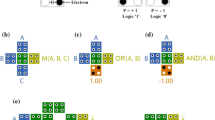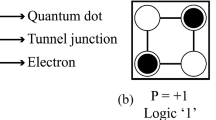Abstract
Look-up tables (LUT) form the basic logic elements in a large class of modern day field programmable gate arrays (FPGA). With FPGAs increasingly being used in low and medium volume productions, many vendors have improved the capacity and versatility of these devices. The enormous logic capacity inherent in state-of-art FPGAs has made it essential to develop automated computer aided design (CAD) support for logic synthesis using these platforms. Since design entry is the only manual phase in the FPGA CAD-flow, it essentially rules out any scope for technology-dependent optimization, which focusses on achieving optimal mapping of logical functionalities onto the target platforms. Evidently, majority of the work related to the implementation of different arithmetic circuits on FPGAs focuses only on the technology-independent optimizations, where the design process consists of modifying the architecture at the top level without giving any consideration to the mapping of the architecture onto the FPGA device. In this paper, we consider the technology-dependent optimization of the fixed-point bit-parallel multipliers on LUT based FPGAs. Our approach re-structures the initial Boolean network and transforms it into an optimized LUT netlist prior to the design entry phase. The design entry of the optimized netlist is then carried out using instantiation based coding styles. This ensures that the optimizations done prior to the design entry phase remain preserved throughout the synthesis process. We particularly focus on 6-input LUTs that are inherent basic logic elements in state-of-art FPGAs. Theoretical analysis and detailed experimentation using state-of-art Xilinx 7th generation FPGAs reveal a substantial speed-up in performance.



























Similar content being viewed by others
References
Narayan GL, Venkataramani B (2005) Optimization techniques for FPGA based wave pipelined DSP blocks. IEEE Trans Very Large Scale Integr (VLSI) Syst 13(7):783–792
Ashour MA, Saleh HI (2000) An FPGA implementation guide for some different types of serial-parallel multiplier structures. Microelectron J 31:161–168
Compton K, Hauck S (2002) Reconfigurable computing: a survey of systems and software. ACM Comput Surv 34(2):171–210
Tessier R, Burleson W (2002) Reconfigurable computing and digital signal processing: past, present and future. In: Programmable digital signal processors, pp 147–186
Woods R, McAllister J, Lightbody G, Yi Y (2008) FPGA-based implementation of signal processing systems. Wiley, Hoboken
Tessier R, Burleson W (2001) Reconfigurable computing for DSP: a survey. J VLSI Signal Process 28:7–27
Todman TJ, Constantinides GA, Wilton SJE, Mencer O, Luk W, Cheung PYK (2005) Reconfigurable computing: architecture and design methods. IEE Proc Comput Digit Tech 152(2):193–207
Naseer R, Balakrishnan M, Kumar A (1998) Direct mapping of RTL structures onto LUT-based FPGAs. IEEE Trans Comput Aided Des Integr Circuits Syst 17(7):624–631
Stitt G, Vahid F, Nematbakhsh S (2004) Energy savings and speed-ups from partitioning critical software loops to hardware in embedded systems. ACM Trans Embed Comput Syst 3(1):218–232
Tse AHT, Thomas DB, Luk W (2011) Design exploration of quadrature methods in option pricing. IEEE Trans VLSI Syst 99:1–9
Kestur S, Davis JD, Williams O (2010) BLAS Comparison on FPGA, CPU and GPU. In: IEEE annual symposium on VLSI, pp 288–293
Jaiswal MK, Cheung RCC (2013) Area-efficient architectures for double precision multiplier on FPGA, with run-time-reconfigurable dual single precision support. Microelectron J 44:421–430
Hauck S, Dehon A (2008) Reconfigurable computing: the theory and practice of FPGA-based computing. Morgan Kaufmann Series, Burlington
Brown SD, Rose J, Francis RJ, Vranesic ZG (1992) Field programmable gate arrays. Kluwer Academic Publisher, Dordrecht
Ling A, Singh DP, Brown SD (2005) FPGA technology mapping: a study of optimality. In: IEEE proceedings design automation conference, pp 427–432
Chen D, Cong, J (2004) DAO map: a depth-optimal area optimization mapping algorithm for FPGA designs. In: IEEE/ACM international conference on_computer aided design
Rohleder R (1991) Marker overview: user programmable logic. In: In-Stat Services research report
Anderson JH, Wang Q (2011) Area-efficient FPGA logic elements: architecture and synthesis. In: 16th Asia and South Pacific design automation conference (ASP-DAC)
Francis R, Rose J, Vranesic Z (1991) Chortle-crf: fast technology mapping for lookup table-based FPGAs. In: Proceedings of the 28th ACM/IEEE design automation conference
Murgai R, Shenoy N, Brayton RK, Vinccentelli AS (1991) Improved logic synthesis algorithms for table look up architectures. In: IEEE international conference on computer-aided design, ICCAD-91
Karplus K (1991) Xmap: a technology mapper for table-lookup field-programmable gate arrays. In: 28th ACM/IEEE design automation conference, DAC, pp 240–243
Woo NS (1991) A heuristic method for FPGA technology mapping based on the edge visibility. In: 28th ACM/IEEE design automation conference, DAC, pp 248–251
Sawkar P, Thomas D (1992) Area and delay mapping for table-look-up based field programmable gate arrays. In: 29th ACM/IEEE design automation conference, DAC, pp 368–373
Cong J, Wu C, Ding Y (1999) Cut ranking and pruning: enabling a general and efficient FPGA mapping solution. In: Proceedings of the 1999 ACM/SIGDA seventh international symposium on field programmable gate arrays, pp 29–35
Francis R, Rose J, Vranesic Z (1991) Technology mapping for lookup table-based FPGA’s for performance. In: IEEE international conference on computer-aided design, ICCAD-91
Murgai R, Shenoy N, Brayton RK, Vinccentelli AS (1991) Performance directed synthesis for table look up programmable gate arrays. In: IEEE international conference on computer-aided design, ICCAD-91, pp 11–14
Chen KC, Cong J, Ding Y, Kahng AB (1992) DAG-map: graph-based FPGA technology mapping for delay optimization. IEEE Des Test Comput 9(3):7–20
Cong J, Ding Y (1992) An optimal technology mapping algorithm for delay optimization in lookup-table based FPGA designs. In: IEEE international conference on computer-aided design, ICCAD
Yang H, Wong DF (1994) Edge-map: optimal performance driven technology mapping for iterative LUT based FPGA designs. In: IEEE international conference on computer-aided design ICCAD
Pan P, Liu CL (1996) Optimal clock period FPGA technology mapping for sequential circuits. In: 33rd ACM/IEEE design automation conference, DAC
Farrahi AH, Sarrafzadeh M (1994) FPGA technology mapping for power minimization. Field Program Logic Archit Synth Appl 849:66–77
Anderson JH, Najm FN (2002) Power-aware technology mapping for LUT-based FPGAs. In: Proceedings of IEEE international conference on field-programmable technology (FPT)
Wang ZH, Liu EC, Lai J, Wang TC (2001) Power minimization in LUT-based FPGA technology mapping. In: Proceedings of Asia and South Pacific design automation conference ASP-DAC, pp 635–640
Li H, Mak W, Katkoori S (2003) Efficient LUT-based FPGA technology mapping for power minimization. In: Proceedings of Asia and South Pacific design automation conference ASP-DAC, pp 353–358
Lamoureux J, Wilton SJE (2003) On the interaction between power-aware CAD algorithms for FPGAs. In: International conference on computer aided design, ICCAD-2003, pp 701–708, 9–13
Chen D, Cong J, Dong C, He L, Li F, Peng CC (2010) Technology mapping and clustering for FPGA architectures with dual supply voltages. IEEE Trans Comput Aided Des Integr Circuits Syst 29(11):1709–1722
Cong J, Ding Y (1994) On area/depth trade-off in LUT-based FPGA technology mapping. IEEE Trans Very Large Scale Integr (VLSI) Syst 2(2):137–148
Cong J, Hwang Y (1995) Simultaneous depth and area minimization in LUT-based FPGA mapping. In: Proceedings of the third international ACM symposium on field-programmable gate arrays, FPGA, p 95
Legl C, Wurth B, Eckl K (1996) A Boolean approach to performance-directed technology mapping for LUT-based FPGA designs. IN: Proceedings of the design automation conference, DAC, pp 730–733
Cong J, Ding Y (1993) Beyond the combinatorial limit in depth minimization for LUT-based FPGA designs. In: IEEE international conference on computer-aided design, ICCAD
Chang SC, Marek-Sodowska M, Hwang T (1996) Technology mapping for TLU FPGA based on decomposition of binary decision diagrams. IEEE Trans Comput Aided Des Integr Circuits Syst 15(10):1226–1236
Deng L, Sobti K, Zhang Y, Chakarbarti C (2011) Accurate area, time and power models for FPGA based implementations. J Signal Process Syst 63(1):39–50
Kamboh HM, Khan SA (2012) FPGA implementation of fast adder. In: Proceeding of the 7th international conference on computing and convergence technology, pp 1324–1327
Parhi KK (1999) VLSI digital signal processing systems design and implementation. Wiley, Hoboken
Chang CH, Satzoda RK (2010) A low error and high performance multiplexer based truncated multiplier. IEEE Trans Very Large Scale Integr (VLSI) Syst 18(12):1767–1771
Kidambi SS, Guibaly FE, Antoniou A (1996) Area-efficient multipliers for digital signal processing applications. IEEE Trans Circuits Syst II Analog Digit Signal Process 43(2):90–95
Stine JE, Duverne OM (2003) Variations on truncated multiplication. In: Proceedings of the euromicro symposium on digital system design
Baugh CR, Wooley B (1973) A two’s complement parallel array multiplication algorithm. IEEE Trans Comput C–22(12):1045–1047
Keutzer K (1987) DAGON: technology binding and local optimization by DAG matching. In: Proceedings 24th DAC, pp 341–347
Detjens E, Gannot G, Rudell R, Vincentelli AS, Wang A (1987) Technology mapping in MIS. In: Proceedings ICCAD-87, pp 116–119
Bhattacharjee S, Sil S, Basak B, Chakarbarti A (2011) Evaluation of power efficient adder and multiplier circuits for FPGA based DSP applications. In: International conference on communication and industrial application (ICCIA)
Pradhan M, Panda R (2014) High speed multiplier using Nikhilam Sutra algorithm of Vedic mathematics. Int J Electron 101(13):300–307
Author information
Authors and Affiliations
Corresponding author
Rights and permissions
About this article
Cite this article
Khurshid, B. LUT based realization of fixed-point multipliers targeting state-of-art FPGAs. Des Autom Embed Syst 21, 89–115 (2017). https://doi.org/10.1007/s10617-017-9184-x
Received:
Accepted:
Published:
Issue Date:
DOI: https://doi.org/10.1007/s10617-017-9184-x




